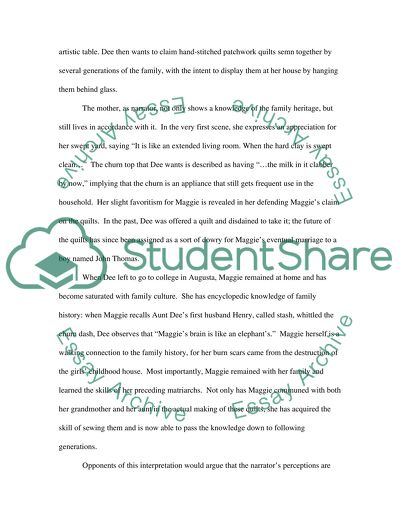Practicality over Aestheticism In Alice Walkers Everyday Use Essay. Retrieved from https://studentshare.org/miscellaneous/1504558-practicality-over-aestheticism-in-alice-walkers-everyday-use
Practicality over Aestheticism In Alice Walkers Everyday Use Essay. https://studentshare.org/miscellaneous/1504558-practicality-over-aestheticism-in-alice-walkers-everyday-use.


